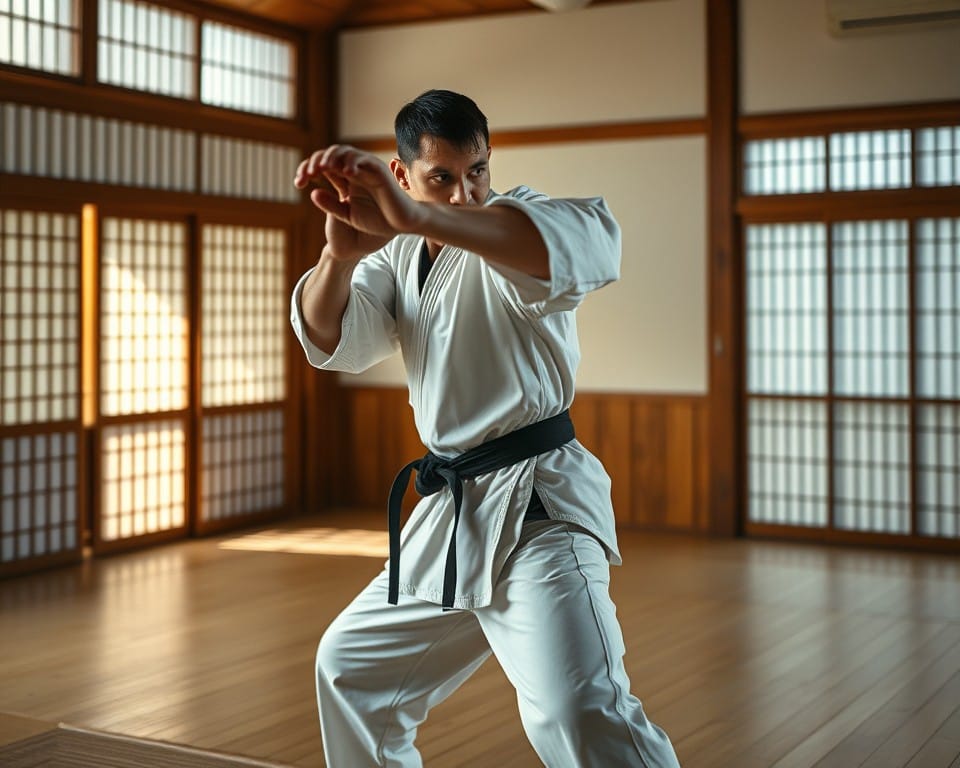Kyokushin Karate didn’t just pop up out of nowhere. It’s not one of those “fly-by-night” martial arts styles that fizzles out. This style? It’s a way of life. And if you’ve ever watched a Kyokushin practitioner, it’s clear they’re built different. They’ve got this discipline, this drive that pushes them beyond the limits of what you think a human can endure. It all started with one guy—Mas Oyama—and what he built has grown into a global phenomenon that influences how we view combat and discipline today. But here’s the thing: Kyokushin isn’t just about fighting. It’s about mental toughness, pushing your body to the breaking point, and then pushing past that.
So, let’s unpack the journey of Kyokushin Karate, from the streets of Okinawa to its status today as a worldwide force. We’re talking real history, the philosophy behind the punches, and why you should care about this style, even if you’re not planning to step into a dojo anytime soon.
Key Takeaways:
- Kyokushin Karate originated from the traditions of Okinawan martial arts but took on a unique life under Mas Oyama’s leadership.
- This style is a full-contact, no-nonsense approach to karate that has spread worldwide, thanks to its brutal training methods and effective fighting techniques.
- It’s not just about physical strength; Kyokushin philosophy heavily emphasises mental discipline and spiritual growth.
- Understanding Kyokushin’s evolution will show you why it’s more than just another martial art—it’s a global movement that has shaped modern combat sports like MMA and kickboxing.
The Roots of Kyokushin Karate in Okinawa’s Martial Arts Tradition
Okinawa might just be a small island, but it’s where some of the most hardcore martial arts come from. Karate itself was born here, influenced by the island’s strategic location between China and Japan. The original martial art styles—like Goju-Ryu and Shorin-Ryu—were all about practicality. You needed to defend yourself, and there weren’t fancy rules about what you could or couldn’t do. So, they incorporated techniques that would actually work in a real fight.
Kyokushin pulls heavily from these traditions, but Mas Oyama didn’t just stop at copying. He reinvented it. Okinawan martial arts, with their emphasis on discipline, toughness, and practicality, were the foundation. Kyokushin’s focus on full-contact sparring and rigorous physical conditioning stems from this lineage.
Okinawan Martial Arts and Their Influence on Kyokushin Karate
When you hear people talk about karate, they usually mean the Okinawan styles, and for a good reason. These systems evolved over centuries as a response to real-life threats. Goju-Ryu is probably the most famous, and if you know anything about Kyokushin, you’ll recognise some of its techniques. Circular blocks, hard stances, and breathing exercises—Kyokushin borrowed these but made them meaner. Okinawan fighting styles were about being adaptable, practical, and brutal. In a fight, the only rule is survival.
Mas Oyama saw this and thought, “Yeah, that’s great… but what if we take it up a notch?” That’s where the full-contact aspect came in. Kyokushin’s toughness owes a lot to these Okinawan roots. It’s the reason why when you face a Kyokushin fighter, you feel like you’ve been hit by a truck.
The Birth of Kyokushin: From Okinawa to Japan
Now, Mas Oyama wasn’t just some regular karate guy. This man trained like a beast, learning from some of the greatest martial artists of his time. He started with Shotokan and Goju-Ryu but quickly found that he wasn’t satisfied. He wanted more power, more intensity. So, he went into isolation for years—just him, the mountains, and a whole lot of training.
When he returned? He’d created something new: Kyokushin—meaning “Ultimate Truth”. This wasn’t your casual after-school karate class. This was a system built on hard training and full-contact sparring that left no room for weakness.
Mas Oyama’s Vision and the Creation of Kyokushin
Mas Oyama’s whole life was about proving strength. Born in Korea, raised in Japan, and trained by the best, he took everything he’d learned and turned it into something different. He didn’t want karate to be just another sport. For him, it was a way to cultivate indomitable spirit. And this wasn’t just talk—he lived it.
Oyama believed in “training until your bones break,” which was more than just a metaphor. He created a system where the strongest would rise, and the weak would be weeded out. His philosophy became the backbone of Kyokushin: Full-contact fights, rigorous conditioning, and a belief that only by challenging yourself can you reach your true potential.
The Global Spread of Kyokushin Karate
Kyokushin didn’t stay in Japan for long. Its effectiveness made it impossible to contain. Fighters from all over the world saw what this style could do and flocked to Oyama’s dojo to learn it. Today, Kyokushin has spread to over 120 countries. Its influence? Global.
If you’ve ever seen a full-contact karate tournament or even a mixed martial arts fight, you’ve seen Kyokushin’s fingerprint. This isn’t your typical point-sparring karate; it’s the real deal. Kyokushin practitioners fight hard, and they fight to win.
From Japan to the World: Kyokushin’s International Influence
It didn’t take long for Kyokushin to go global. Oyama’s students spread the gospel of full-contact karate across the planet, and now you can find Kyokushin schools everywhere—from the United States to Europe, and beyond. In the US, it made waves in the martial arts community, becoming the standard for what full-contact karate should be.
But what’s even more interesting is how Kyokushin influenced other martial arts. Kickboxing, Muay Thai, and even MMA owe a debt to Kyokushin. A lot of MMA fighters today either have Kyokushin backgrounds or have trained in its brutal methods. Ever wonder where those devastating low kicks come from? That’s right—Kyokushin.
The Philosophy Behind Kyokushin Karate
Kyokushin’s not just about kicking people in the face—although it does that very well. The philosophy behind the style is where the real power comes from. Oyama designed the training to push people beyond their physical limits. He wanted to break you down mentally and rebuild you stronger.
Rigorous Training and Discipline as Cornerstones
Kyokushin training is like boot camp but worse. You don’t just get a good workout; you get a life lesson in pain and endurance. Every part of your body becomes a weapon, and every ounce of your energy is spent honing it. Kyokushin fighters are trained to endure pain, block out fear, and keep pushing forward—no matter what.
This isn’t just about building tough fighters; it’s about building tough people. The discipline you develop in Kyokushin translates into every other part of life. You get mentally tough, and that’s the secret sauce that sets Kyokushin apart from so many other styles.
The Spiritual and Philosophical Depth of Kyokushin Karate
Oyama wasn’t just focused on the physical side of training. He believed in the spiritual growth of his students. This is where Kyokushin draws from Zen and Bushido philosophies. It’s about finding your inner peace through hardship. And yes, that peace comes after you’ve been knocked to the mat a few times.
The point isn’t to avoid pain but to embrace it. You push through the physical to reach something higher. Oyama called it taming the spirit. You don’t just become a better fighter—you become a better version of yourself.
Key Figures and Influential Practitioners in Kyokushin Karate
Mas Oyama may have been the founder, but he wasn’t alone in making Kyokushin what it is today. His students took what they learned and spread it like wildfire across the globe.
Notable Kyokushin Masters and Practitioners
From legends like Shokei Matsui to Andy Hug, Kyokushin has produced some of the world’s best fighters. These guys took what Oyama taught and pushed it even further, blending Kyokushin with other styles and making it even more lethal.
But it’s not just about fighting. The discipline and philosophy of Kyokushin have shaped countless lives. It’s turned ordinary people into extraordinary martial artists and given them the tools to succeed in all areas of life.
Mas Oyama’s Legacy in Kyokushin Karate
Even after his passing, Mas Oyama’s legacy lives on. Kyokushin remains one of the most respected karate styles in the world, known for its toughness and no-excuses mentality. Oyama left behind more than just a style—he left a mindset.
This mindset? It’s about pushing beyond what you think is possible. It’s about finding out who you are when everything’s on the line. Oyama’s philosophy still drives Kyokushin today, and it’s why this style isn’t going anywhere anytime soon.
The Future of Kyokushin Karate in Modern Martial Arts
As martial arts evolve, Kyokushin’s core principles remain strong.
But it’s not a style that’s stuck in the past. Like any good system, it adapts, and today’s Kyokushin fighters are using modern training techniques to keep the style relevant in a world dominated by mixed martial arts.
Continuing the Kyokushin Tradition in Today’s World
Modern Kyokushin schools have embraced new ways of training without losing the heart of the style. You’ll still find the rigorous conditioning, the full-contact sparring, and the mental toughness. But now, there’s an added layer—modern fitness science.
This combination of old-school toughness with modern techniques has kept Kyokushin on the cutting edge. And while it may not be as flashy as some other styles, it’s still one of the most respected systems out there. If you want to learn how to fight and build mental toughness? Kyokushin is where it’s at.
Innovations and Adaptations in Kyokushin Training
In the last few years, we’ve seen Kyokushin adapt in interesting ways. Schools are incorporating more advanced strength training, functional movements, and even cross-training with other martial arts. The result? A new generation of Kyokushin fighters who are faster, stronger, and more adaptable than ever before.
But no matter how much it evolves, Kyokushin will always stay true to its roots. That’s the beauty of it.
Frequently Asked Questions
Is Kyokushin Karate safe for beginners?
Yes, Kyokushin Karate is beginner-friendly, and most dojos welcome students of all fitness levels and ages. While Kyokushin is known for its full-contact nature, beginners are gradually introduced to more advanced sparring and physical conditioning as they progress.
Do I need to be in shape to start Kyokushin Karate?
No prior fitness level is required to start Kyokushin. The training itself is designed to improve your physical condition over time, and many people find that they become stronger and fitter through consistent practice.
What equipment do I need to practice Kyokushin Karate?
For beginners, loose-fitting gym clothes are typically sufficient. As you advance, you’ll need a traditional white karate uniform (gi), along with protective gear like shin guards, mouth guards, and gloves for sparring.
How often should I attend Kyokushin Karate classes?
Most schools recommend at least two classes per week to see consistent progress, but you can attend more frequently based on your availability and goals. Many Kyokushin programs allow for flexible scheduling to fit individual needs.
What is the meaning of “Osu” in Kyokushin Karate?
“Osu” is a term commonly used in Kyokushin to convey persistence, effort, and respect. It can be used in a variety of situations, such as greetings or affirming understanding, and embodies the spirit of pushing through challenges with maximum effort.
Can children practice Kyokushin Karate?
Many Kyokushin dojos offer classes for children as young as 5 years old. These classes are typically structured to focus on building self-discipline, confidence, and coordination, while introducing the basic techniques of the martial art.
How does Kyokushin Karate compare to other karate styles?
Kyokushin differs from other karate styles in its emphasis on full-contact sparring and rigorous physical conditioning. While many traditional styles focus on point-based sparring, Kyokushin prepares practitioners for real-life combat scenarios by pushing both their physical and mental limits.
What are the benefits of practicing Kyokushin Karate?
Kyokushin Karate offers numerous benefits, including improved physical fitness, mental toughness, stress relief, self-discipline, and self-defense skills. It also helps to develop focus, balance, and coordination.

